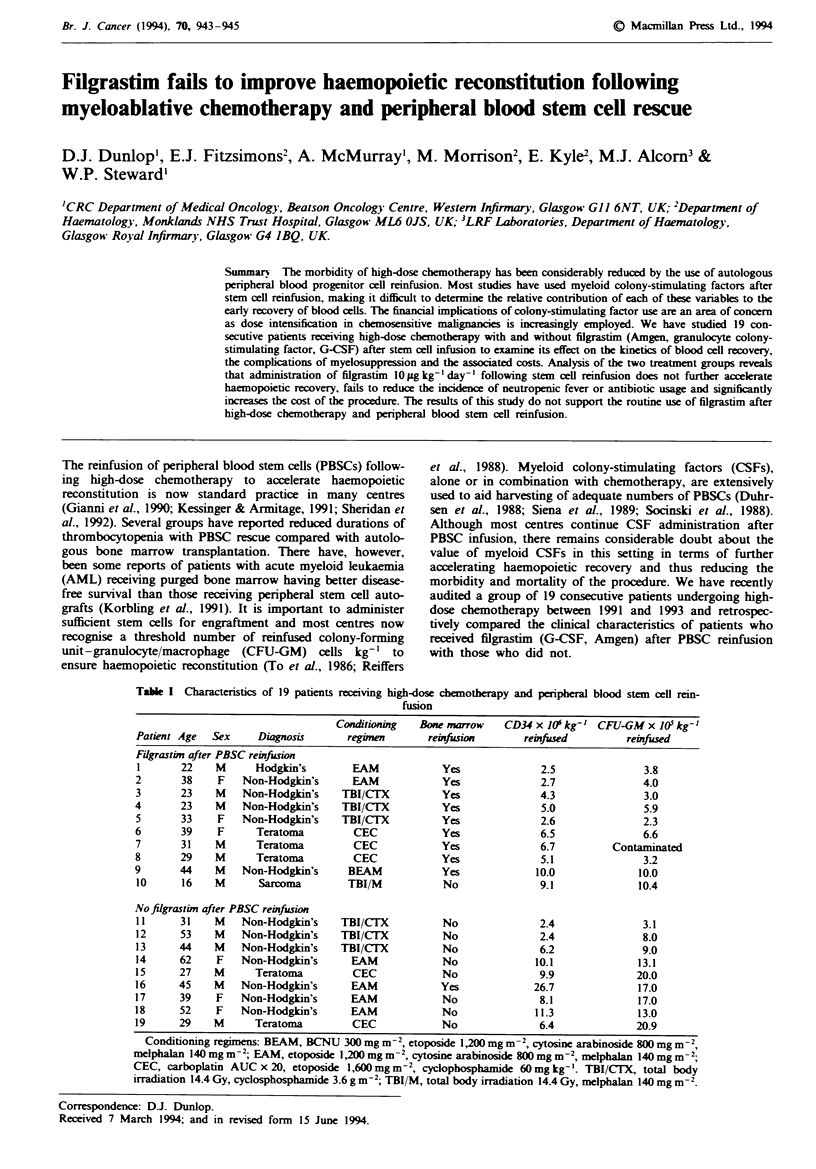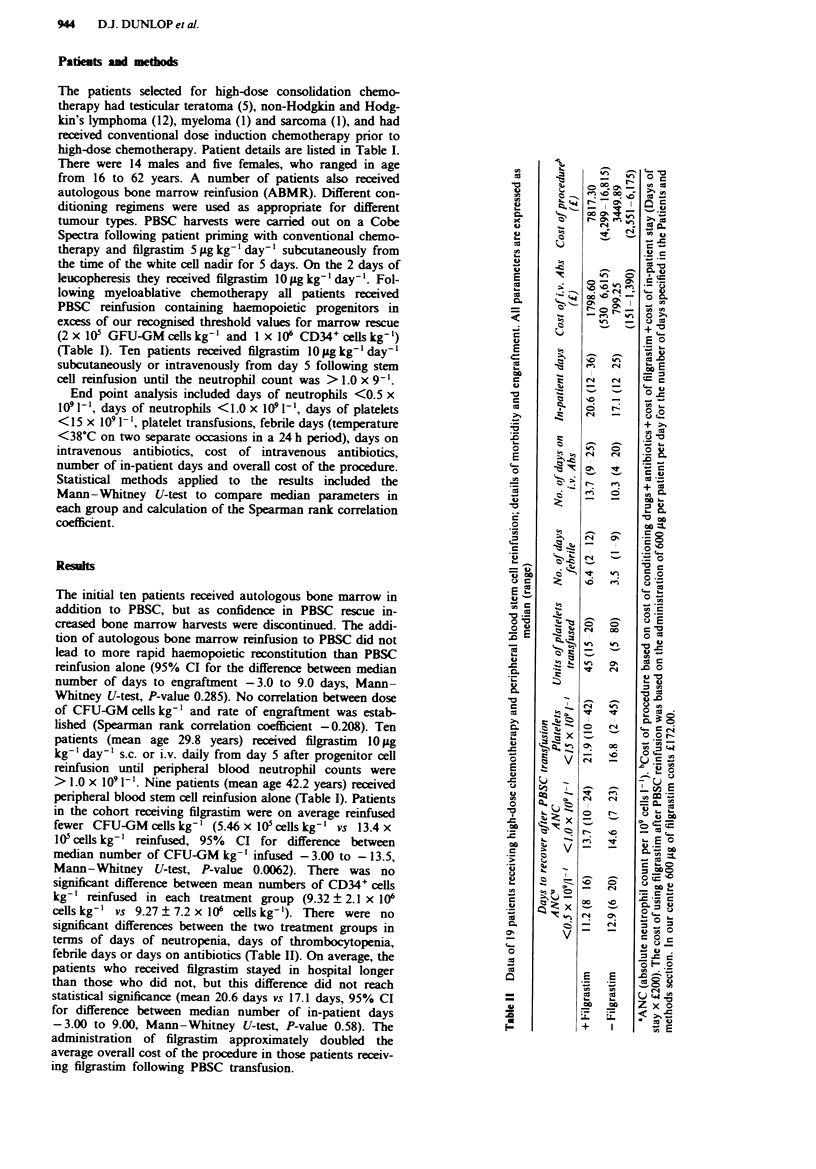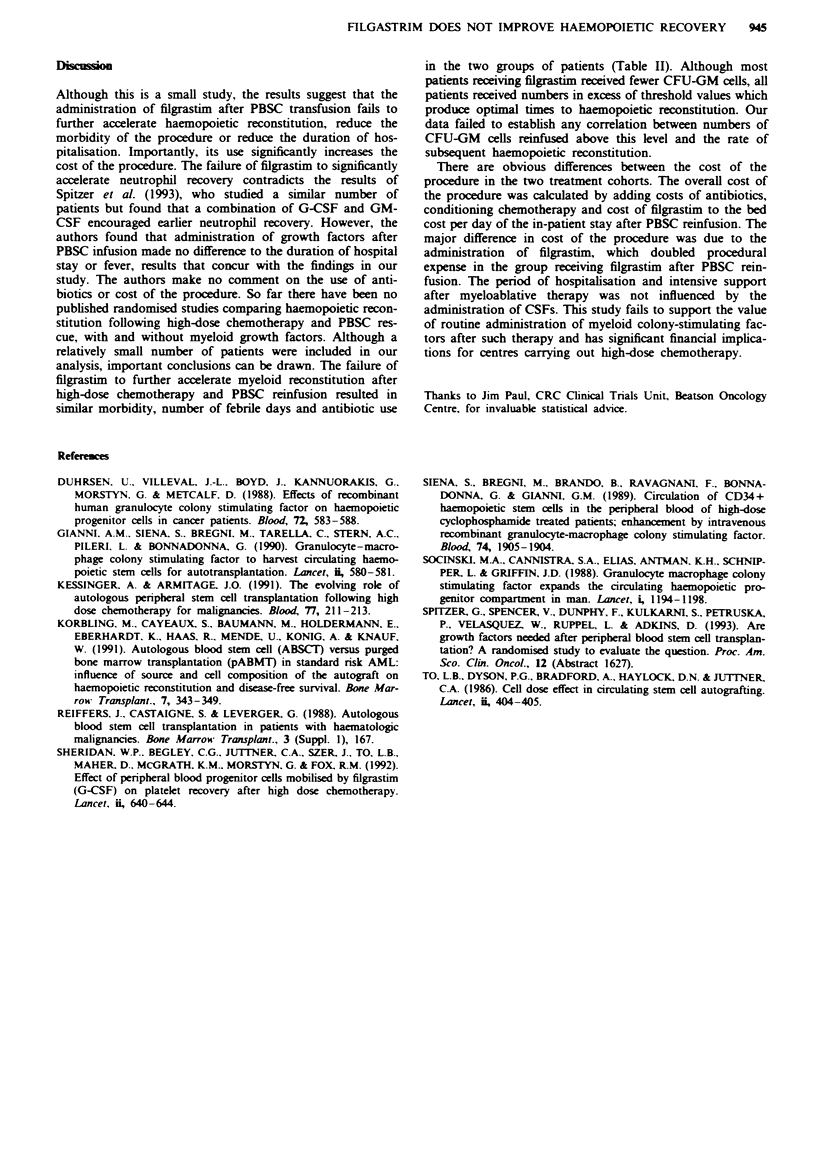Abstract
The morbidity of high-dose chemotherapy has been considerably reduced by the use of autologous peripheral blood progenitor cell reinfusion. Most studies have used myeloid colony-stimulating factors after stem cell reinfusion, making it difficult to determine the relative contribution of each of these variables to the early recovery of blood cells. The financial implications of colony-stimulating factor use are an area of concern as dose intensification in chemosensitive malignancies is increasingly employed. We have studied 19 consecutive patients receiving high-dose chemotherapy with and without filgrastim (Amgen, granulocyte colony-stimulating factor, G-CSF) after stem cell infusion to examine its effect on the kinetics of blood cell recovery, the complications of myelosuppression and the associated costs. Analysis of the two treatment groups reveals that administration of filgrastim 10 micrograms kg-1 day-1 following stem cell reinfusion does not further accelerate haemopoietic recovery, fails to reduce the incidence of neutropenic fever or antibiotic usage and significantly increases the cost of the procedure. The results of this study do not support the routine use of filgrastim after high-dose chemotherapy and peripheral blood stem cell reinfusion.
Full text
PDF


Selected References
These references are in PubMed. This may not be the complete list of references from this article.
- Kessinger A., Armitage J. O. The evolving role of autologous peripheral stem cell transplantation following high-dose therapy for malignancies. Blood. 1991 Jan 15;77(2):211–213. [PubMed] [Google Scholar]
- Sheridan W. P., Begley C. G., Juttner C. A., Szer J., To L. B., Maher D., McGrath K. M., Morstyn G., Fox R. M. Effect of peripheral-blood progenitor cells mobilised by filgrastim (G-CSF) on platelet recovery after high-dose chemotherapy. Lancet. 1992 Mar 14;339(8794):640–644. doi: 10.1016/0140-6736(92)90795-5. [DOI] [PubMed] [Google Scholar]
- Siena S., Bregni M., Brando B., Ravagnani F., Bonadonna G., Gianni A. M. Circulation of CD34+ hematopoietic stem cells in the peripheral blood of high-dose cyclophosphamide-treated patients: enhancement by intravenous recombinant human granulocyte-macrophage colony-stimulating factor. Blood. 1989 Nov 1;74(6):1905–1914. [PubMed] [Google Scholar]
- Socinski M. A., Cannistra S. A., Elias A., Antman K. H., Schnipper L., Griffin J. D. Granulocyte-macrophage colony stimulating factor expands the circulating haemopoietic progenitor cell compartment in man. Lancet. 1988 May 28;1(8596):1194–1198. doi: 10.1016/s0140-6736(88)92012-0. [DOI] [PubMed] [Google Scholar]


